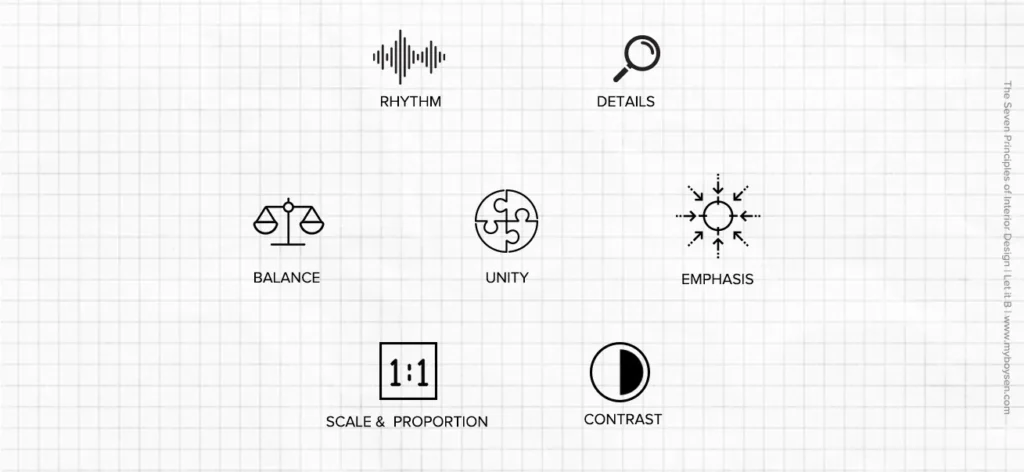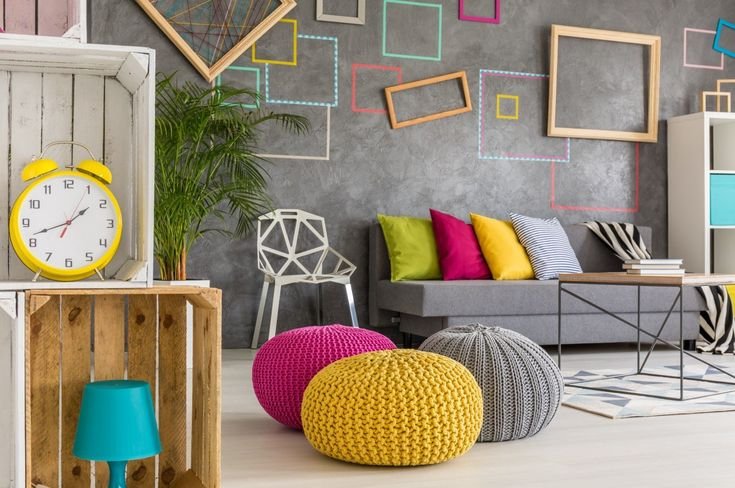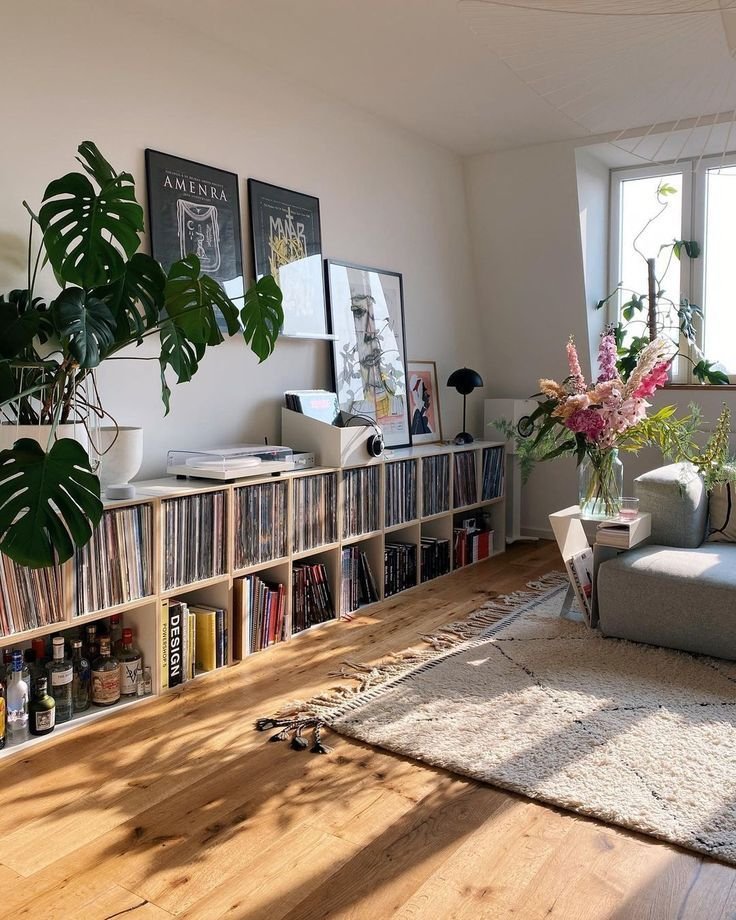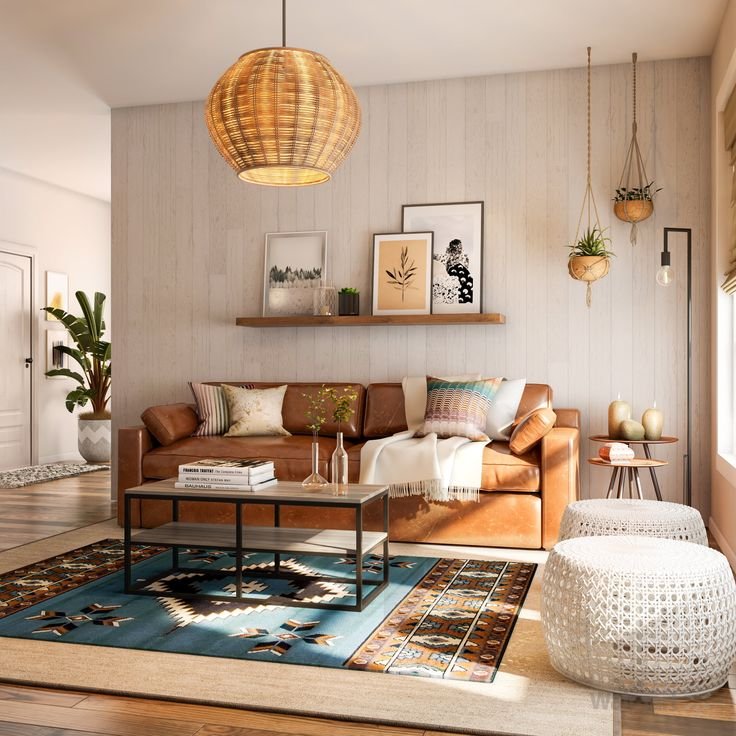Welcome to the world where your walls whisper style, your furniture sings harmony, and your décor narrates the story of you. Yes, we’re talking about interior design, and no, it’s not as intimidating as it sounds! If you’ve ever walked into a room and thought, “Wow, this feels right,” then congratulations – you’ve witnessed the magic of these seven design principles in action.
So, grab a comfy seat (preferably one that’s perfectly balanced in your space) and let’s dive into these stylish secrets.

1. Balance: Because Nobody Likes a Wobbly Room
Ever tried walking on a seesaw? Awkward, right? That’s exactly how a poorly balanced room feels. Balance in interior design is about creating visual stability. Whether you prefer the mirrored elegance of symmetrical balance (think matching side tables and lamps) or the offbeat charm of asymmetrical balance (like pairing a cozy armchair with a sleek sofa), the goal is the same – harmony. And for the adventurous souls, there’s radial balance, where everything revolves around a central focal point, like your chic new coffee table or a roaring fireplace.
2. Unity: The Glue That Holds It All Together
Unity is the BFF of interior design. It’s the thread that ties your space together, ensuring your living room doesn’t feel like it crashed someone else’s party. Achieve this by sticking to a cohesive color palette, materials, and shapes. Bonus points if the vibe flows from room to room, creating a home that feels like one big, happy family.
3. Rhythm: Your Home’s Playlist, Minus the Beats
Imagine your eyes dancing around a room. That’s rhythm in interior design. It’s about creating patterns and repetitions that guide your gaze, like matching tapware in the kitchen and bathroom or using similar wood tones across furniture. Rhythm keeps the energy flowing, making your space feel alive and engaging. No musical talent required.
4. Scale and Proportion: Size Matters
Don’t let a towering couch overshadow your tiny living room, or vice versa. Scale and proportion ensure everything fits just right. Large rooms call for grand furniture, while compact spaces demand sleek, space-efficient pieces. And don’t forget proportions within the room – your bold artwork deserves a companion, like matching cushions or rugs, to keep things balanced.
5. Contrast: Opposites Attract
Black and white. Smooth and rough. Big and small. Contrast is all about bringing opposites together to create a room that pops. Pick a bold color, pair it with a softer shade, and watch the magic unfold. Or, mix textures like velvet and wood to make your space feel both luxurious and grounded. Contrast keeps things interesting, like the unexpected plot twist in your favorite series.
6. Emphasis: The Showstopper
Every room deserves a diva – a focal point that commands attention. It could be a dramatic piece of art, a striking accent wall, or a chic backsplash in your kitchen. Emphasis gives your space a sense of purpose and drama. Let your chosen star shine, and watch as everything else falls into place around it.
7. Details: The Cherry on Top
Finally, the unsung hero of interior design: details. From the texture of your cushions to the style of your cabinet handles, it’s the little things that make a big difference. Think of it as accessorizing your outfit – the right earrings (or door handles) can transform the ordinary into the extraordinary. So, scan your space, spot the overlooked elements, and give them a stylish upgrade.
Final Thoughts
Interior design is more than just pretty furniture and fancy paint colors. It’s about creating a space that reflects who you are while making everyone who steps inside feel right at home. With these seven principles, you’re not just decorating; you’re crafting a masterpiece. Now go on, unleash your inner designer, and let your home be the talk of the town… or at least your block!





